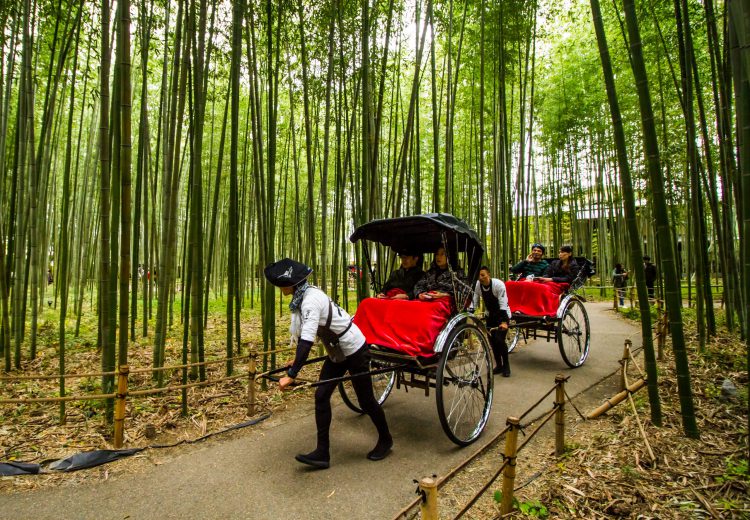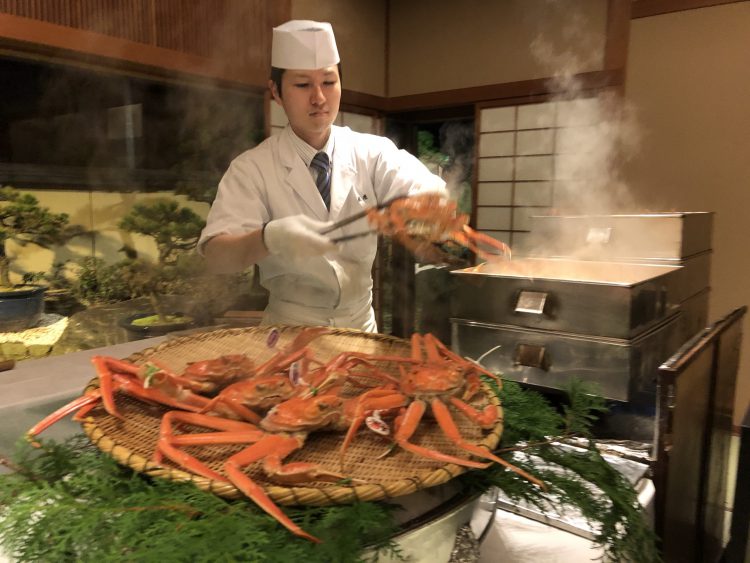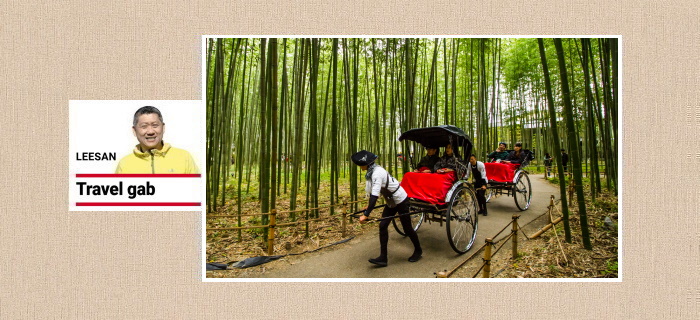The spirit of craftsmanship – by leesan
Ever wonder why some ‘made in Japan’ products last longer than others?

At the Arashiyama Bamboo Garden in Kyoto, you could ride in a rickshaw just like in the old days. Japan is known for its ancientt traditions and quality craftsmanship – Photos:Apple Vacations
MY good friend Takao Nakagawa invited me to his son’s wedding reception in Kyoto, Japan recently. Takao is the fourth-generation owner of Misugi Onsen Resort in Mie Prefecture in the Kansai region, where Kyoto is.
Because of the wedding reception, I had the very rare opportunity to stay the night at the Furuyasho, a double-storey Japanese-style wooden inn located along Shichijo-dori in Kyoto, that’s more than 100 years old. I asked myself whether such a dilapidated old house was still liveable. What if a major earthquake strikes? Would I be safe? The Kansai region has experienced numerous earthquakes over the years but this building still stands erect.
What’s going on here? Isn’t it just another ordinary wooden house? How can it withstand all those earthquakes and other harsh elements over the past century, and is completely temite-free, too?
Could it be that special construction materials had been used, or just the exceptional craftsmanship of the builders?
Even though I had so many questions about the place, I also thought, “Well, why not just give it a try and experience living in a century-old dilapidated house?”
It rained the night I stayed there. The raindrops were falling on the roof tiles of the house, flowing along the water trough down the exquisitely crafted copper gutter chain and to the underground drain, forming a melodious natural symphony.
This, coupled with the rhythm of the autumn breeze lightly hitting the glass window, and a village bridge spanning across the creek, made an idyllic scene right in the middle of bustling Kyoto.

A skilled chef preparing to serve the most expensive crab in Japan, the echizen kani. The shokunin or ‘artisan spirit’ runs deep in the blood of the Japanese.
Despite the rain, there was totally no leakage from the roof. It looks like the craftsmen back in those days had anticipated that someone would still be living inside this structure 100 years down the road and so built everything to last.
I could see that the entire Kyoto city is teeming with centuries-old wooden buildings, some of which trace back to the Tang dynasty of China. What an invaluable cultural legacy. What is important here is that the craftsmen back then had showcased the true characteristics of traditional Japanese professionalism, something that is passed down for generations. They put up structures that could last for a very long time, so that future generations could still utilise them.
This kind of professional spirit has also been inherited by many modern Japanese craftsmen who have over the years created long-lasting megastructures such as airport terminals, museums, cross-sea bridges, undersea tunnels, bullet trains and sustainable cities which preserve the integrity of their water sources, air, energy and forests.
This is perhaps the reason why they have come up with truly sophisticated (and cosy!) toilet seat covers. These basic yet fantastic items are so coveted that some curious foreign hotel guests would even risk getting arrested and remove them from the toilets to take home as souvenirs! Unbelievable, right?
In Kyoto there are many products that have stood the test of time: The Uji green tea, the Kiyomizu-yaki ceramic teapot with a 1,000-year history, the 114-year-old Kaikado copper tea caddy, the Morioka iron kettle, the century-old kimono shop Nishijin, and the elegant Mikimoto cultured pearls are just some of them. All these products boast many generations of quality craftsmanship.
Coincidentally, next to Furuyasho in Kyoto is the one and only Kaikado known for its copper, silver and tin tea caddies. Since I was there, I took the opportunity to try its rare Blue Mountain white coffee and cheesecake.
According to the “connoisseurs”, this place is veritably the “temple of craftsmanship of the highest order”.
In between sips of coffee, I realised that all the furniture and displays at the shop were custom made. They were all from Japan’s household furniture brand, Akiyamamokkou of Yokohama. This is a top-rated furniture brand whose bespoke products is said to last an average of 200 years.
Akiyamamokkou’s bespoke furniture is the preferred choice of many international-class hotels, palaces, luxury guest houses and even the Japanese parliament house. I believe what makes Akiyamamokkou a globally-respected brand is its eight-year apprenticeship programme, which has churned out many world-class furniture specialists and craftsmen.
During the apprenticeship, participants are instilled in them exemplary work attitude, and given fundamental training, job planning and top skills and techniques.
From the ninth year, the apprentices will be allowed to venture out and explore their own potential, eventually passing on the skills to the next generation of craftsmen.
People say that when you buy from Akiyamamokkou, you are not just buying another set of furniture but a “companionship” or “lifestyle” that will last for 200 years. You may not be alive for as many years, but at least your future grandchildren and even great-grandchildren can get to see a part of your life through the furniture.
Without a doubt, it’s the conscientious craftsmen toiling behind the scene who are responsible for crafting such gems. And because of such devotion, there are still 21,666 small and medium enterprises that are 100 years and older in Japan which continue to devote themselves for the well-being of their fellow countrymen today.
There are also 3,146 workshops over 200 years old, and seven that are over 1,000 years old, including one that has been in existence for almost 1,500 years. This is Kongo Gumi, the world’s oldest surviving company today, which has been passed down for over 40 generations!

Ama, real-life Sea Maidens of Japan. They are Japan’s professional female pearl and seafood divers , historians say the practice of ama may be dated back as early as AD 927 in Japan’s Heian period(some people believe as many as 5,000 years).
Anyhow, the Shokunin spirit of the Ama turns the ordinary into extraordinary.
Japan’s unique corporate inheritance system stems is surely a product of its age-old tradition of prioritising quality education and good craftsmanship.
It is not entirely true to argue that the Japanese economy has remained stagnant for the past 25 years. Between 1949 and 2021, the country’s education system has produced a total of 29 Nobel laureates, 25 of whom were in the last 20 years alone. Such a record is second in the world and first in Asia.
Rest assure that in Japan, only the best is delivered to consumers. It is this craftsmanship spirit that ensures that future generations of Japanese get to eat healthily and use the products and services comfortably and safely.
Let’s travel to Japan, and experience their artisanal treats!
Leesan, the founder of Apple Vacations, has travelled to 137 countries, seven continents and enjoys sharing his travel stories and insights. He has also authored five books.

Published in STAR 2, 1 Apr 2023
全球超过80000家酒店,Apple101助您轻松订房,出行无忧,绝对优惠价。入住期间付款,多数客房可免费取消!











